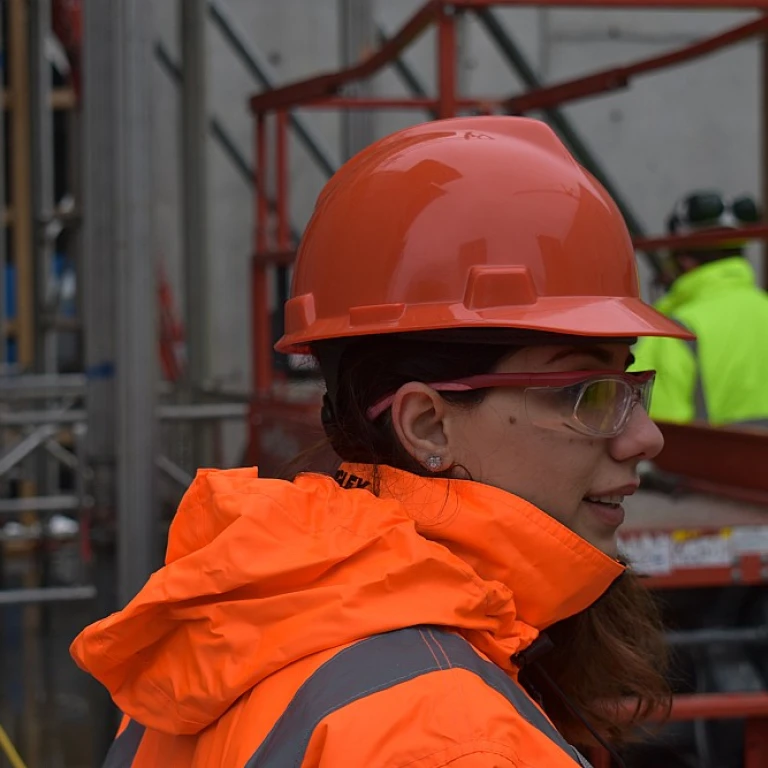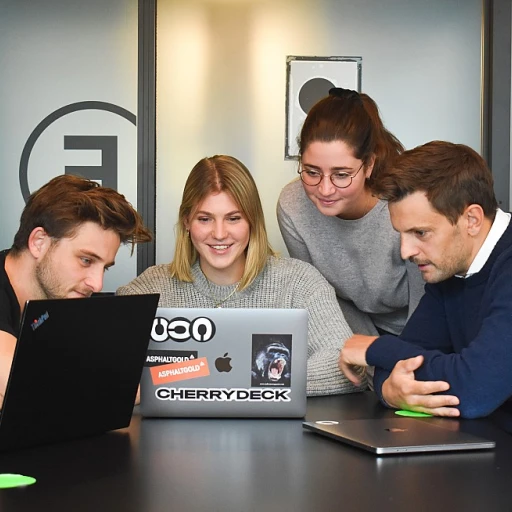Understanding the Plumbing and Pipe Fitting Industry
The Plumbing and Pipe Fitting Landscape
Understanding the plumbing and pipe fitting industry is essential for anyone considering a career in this field. This sector is vital to maintaining the infrastructure that supports our daily lives, from residential homes to large industrial complexes. Plumbers, pipefitters, and steamfitters are the backbone of this industry, ensuring that water, gas, and other fluids flow safely and efficiently through pipes and piping systems.
The work of plumbers and pipefitters involves installing, repairing, and maintaining piping systems. These systems can range from simple water supply lines to complex high-pressure systems used in heating and cooling applications. The job description for these roles often includes tasks such as reading blueprints, selecting appropriate materials, and ensuring compliance with building codes and regulations.
Career Paths and Opportunities
For those interested in exploring the viability of a career as an electrician, the plumbing and pipe fitting industry offers a comparable set of opportunities. Both fields require a strong foundation in technical skills and problem-solving abilities. However, plumbing careers tend to focus more on the physical installation and repair of pipes, whereas electricians deal with electrical systems.
Plumbing and pipe fitting professionals often start their careers through an apprenticeship program, which provides hands-on job training and a chance to learn from experienced plumbers and pipefitters. A high school diploma or equivalent is typically required to enter these programs, which combine classroom instruction with practical experience.
The job outlook for plumbers, pipefitters, and steamfitters is promising, with the Bureau of Labor Statistics projecting steady growth in the coming years. This demand is driven by the need to maintain and upgrade aging infrastructure, as well as the continued development of new construction projects.
In summary, a career in plumbing and pipe fitting offers a stable and rewarding path for those willing to invest in the necessary training and skills development. As we explore further in the following sections, there are numerous advantages to this career choice, along with some challenges that professionals in the field may face.
Advantages of a Career in Plumbing and Pipe Fitting
Why a Plumbing Career Stands Out
A career in plumbing and pipe fitting offers numerous advantages, making it an attractive choice for many individuals considering a career transition. The demand for skilled plumbers and pipefitters is consistently high, largely due to the essential nature of their work. Plumbing systems are vital for residential, commercial, and industrial facilities, ensuring proper water supply, waste management, and even heating and cooling.
High Demand and Job Security
According to the Bureau of Labor Statistics, the job outlook for plumbers, pipefitters, and steamfitters is projected to grow steadily. This growth can be attributed to new building constructions, existing infrastructure maintenance, and the increasing complexity of water and piping systems. This demand translates to job security and stability, a significant advantage in uncertain economic climates.
Competitive Salaries
The financial benefits of pursuing a career in plumbing and pipe fitting can't be overlooked. Professionals in this field often enjoy competitive salaries. Their income can increase substantially with experience, specialization, and additional training or certifications. Given the technical skills required to install, repair, and maintain complex piping systems, employers are willing to offer attractive compensation packages.
Opportunities for Advancement
Another appealing aspect of a plumbing career is the opportunity for advancement. Starting as an apprentice, individuals can gain valuable hands-on training and experience. As they develop their skills, they may progress to journeyman or master plumber status, each offering increased responsibilities and income. This path allows for a clear progression and professional development throughout one's career.
Flexibility and Entrepreneurial Potential
A plumbing career also offers flexibility in terms of employment. Plumbers and pipefitters can work for large plumbing firms or smaller, family-owned businesses. Alternatively, they may choose to start their own businesses, further increasing their earnings potential and allowing them to control their work schedules. For those with an entrepreneurial spirit, a plumbing career can be both financially rewarding and personally satisfying.
Skill Development and Practical Experience
The extensive training period, including apprenticeships, ensures that plumbers and pipefitters acquire valuable skills that are applied directly on the job. This practical experience is critical, as it enhances their ability to tackle various challenges confidently and effectively. Whether it's installing new pipe systems or repairing high-pressure steam systems, the skills gained are both diverse and applicable to many situations.
For more insights on navigating career transitions into executive roles in different sectors, consider exploring how to make career shifts effectively here.
Challenges Faced by Plumbing and Pipe Fitting Professionals
Potential Obstacles in Plumbing and Pipe Fitting Careers
Pursuing a career in plumbing and pipe fitting can be rewarding, but it's not without its unique set of challenges. Whether you're a seasoned plumber or a newcomer considering an effective career transition, understanding these obstacles can better prepare you for what lies ahead.
Physical Demands: Plumbers and pipefitters often work in physically demanding environments, requiring them to lift heavy pipes, equipment, and tools. The job also involves a range of activities, including crouching, bending, and working in confined spaces, which can be physically taxing over time.
Safety Risks: Given that pipefitters work with high-pressure systems and heating and cooling lines, safety is a primary concern. Workers must continually adhere to safety protocols to avoid risks when repairing or installing piping systems. This often includes wearing protective gear and staying updated on the latest safety regulations.
Weather Conditions: Because a plumber might need to fix outdoor water lines or the piping systems during emergencies, they frequently work in various weather conditions, which can be less than ideal, particularly in extreme heat or cold.
Skill Requirements: Mastery of the skills needed for a successful plumbing career requires commitment to continuous learning. Plumbers and steamfitters must have comprehensive knowledge about different piping systems, including their installation, repair, and maintenance. These skills are typically gained through a combination of job training and formal education.
Work-Life Balance: The demands of the job can sometimes lead to long and irregular hours. Emergency repairs are common and can result in callbacks or unexpected overtime, impacting one’s work-life balance.
Ultimately, the pros and cons of a plumbing career must be weighed carefully, taking into account the demanding nature of the work as well as the rewards it offers. Understanding these challenges ahead of time can make the transition smoother and set the stage for a successful, sustainable career in the plumbing and pipe fitting industry.
Training and Certification Requirements
Essential Qualifications and Certifications for Aspiring Plumbers and Pipefitters
Embarking on a career in plumbing and pipe fitting requires a solid foundation of skills and knowledge. While a high school diploma or equivalent is typically necessary, further educational pursuits and training programs are crucial to mastering the craft. Aspiring plumbers and pipefitters should consider the following critical components when planning their training and certification journey:
- Hands-On Apprenticeship Programs: Participating in an apprenticeship program is the gateway to gaining practical, on-the-job training that is essential in this industry. Apprentices work under the guidance of seasoned professionals, honing their skills in installing and repairing pipe systems, diagnosing issues, and understanding complex piping systems.
- Specialized Technical Training: Depending on the specific field of interest, such as pipefitting, plumbing, or steamfitting, technical training programs are available to address these needs. These programs offer in-depth knowledge of water, heating, and cooling systems, preparing individuals for various situations they might encounter on the job.
- State-specific Licensing Requirements: It is important to be aware of state or regional licensing requirements, which usually mandate passing specific exams. These credentials certify that the individual is competent in adhering to safety and industry standards.
- Continuous Education and Skill Development: The plumbing and pipefitting industry is ever-evolving, with new technologies and methodologies regularly introduced. To remain competitive, professionals should engage in continuous education to update their skills, ensuring they meet the latest standards and client expectations.
Whether aiming to excel in a job as a plumber, pipefitter, or steamfitter, the foundation of a successful plumbing career is securely built upon a combination of education, apprenticeship, and state-mandated certifications. Those who invest in these areas will find themselves better prepared to navigate the challenges and embrace the opportunities within this fulfilling trade.
Comparing Plumbing and Pipe Fitting with Other Trades
Plumbing vs. Other Trades: A Comparative Insight
When considering a career transition within the trades, it's essential to weigh the merits and challenges of various professions, including plumbing and pipe fitting. Here's a closer look at how this profession compares with others in the trades sector.- Job Security and Demand: Plumbers, pipefitters, and steamfitters are on the high demand list according to labor statistics due to the necessity of their work in installing and repairing piping systems crucial for everyday living and industrial operations. Other trades like electrical work or carpentry may not experience the same consistent demand or regulatory requirements.
- Diverse Work Environment: Plumbers and pipefitters often work across a multitude of settings—from residential homes to industrial plants. Unlike some trades where work can be relatively consistent, a plumbing career offers diverse experiences, whether dealing with water systems or high-pressure piping installations.
- Occupational Skills and Training: The training required in plumbing and pipe fitting is quite comprehensive. Apprenticeship programs are available, often combining on-the-job training with technical school classes. This contrasts with some other skilled trades that might have less stringent requirements. The emphasis on a thorough job training module supports a robust skill set development that pays dividends in career longevity and progression.
- Certification and Advancement: Becoming a certified plumber or pipefitter often requires passing exams and obtaining a license, adding a layer of complexity compared to some other trades. However, this process helps ensure a high level of expertise and can lead to career advancement opportunities within the industry, such as supervisory or specialized roles.
- Physical Demands and Work Conditions: Similar to other trades, plumbing work can be physically demanding, requiring handling of heavy equipment and tools and working in confined spaces. However, plumbers, pipefitters, and steamfitters might face additional challenges related to high-pressure systems and emergency repairs.
Tips for a Successful Transition into Plumbing and Pipe Fitting
Steps for a Smooth Entry into the Plumbing and Pipe Fitting Field
Embarking on a new career path can be a daunting task, especially in a technical and hands-on field like plumbing and pipe fitting. However, with the right preparation and mindset, this career transition can be both rewarding and manageable. Here are some effective strategies to ease your way into this industry:- Research and Understand the Field: Before diving in, familiarize yourself with the job descriptions and daily responsibilities of plumbers, pipefitters, and steamfitters. This will help you gain clarity about what to expect and determine if it aligns with your interests and strengths.
- Meet Educational and Training Requirements: Typically, a high school diploma or equivalent is needed to begin entry-level jobs. From there, pursue an apprenticeship program that offers both theoretical education and practical job training, helping you develop essential skills for installing and repairing piping systems.
- Seek Appropriate Certifications: While training, aim to achieve the necessary certifications for your specialty. State-by-state requirements can vary, so ensure you understand what is needed to work legally as a plumber, pipefitter, or steamfitter in your area.
- Leverage Existing Skills: Whether you are coming from a technical or customer service background, identify skills that can be beneficial in plumbing work. Skills in problem-solving, communication, and manual dexterity are valuable in this field.
- Network with Industry Professionals: Connect with experienced plumbers and pipefitters to gain insights into the pros and cons of a plumbing career. Engaging with industry professionals can provide guidance and open up potential job opportunities.
- Stay Updated on Industry Trends: Plumbing and pipe fitting require knowledge of the latest technologies and systems. Staying informed about industry trends and regulations, such as high-pressure piping systems, is important for career advancement.
- Be Prepared for Physical Demands: This career can be physically strenuous. Prepare yourself for the physical demands of jobs that often involve working in various environments, sometimes at high altitudes or within confined spaces.








